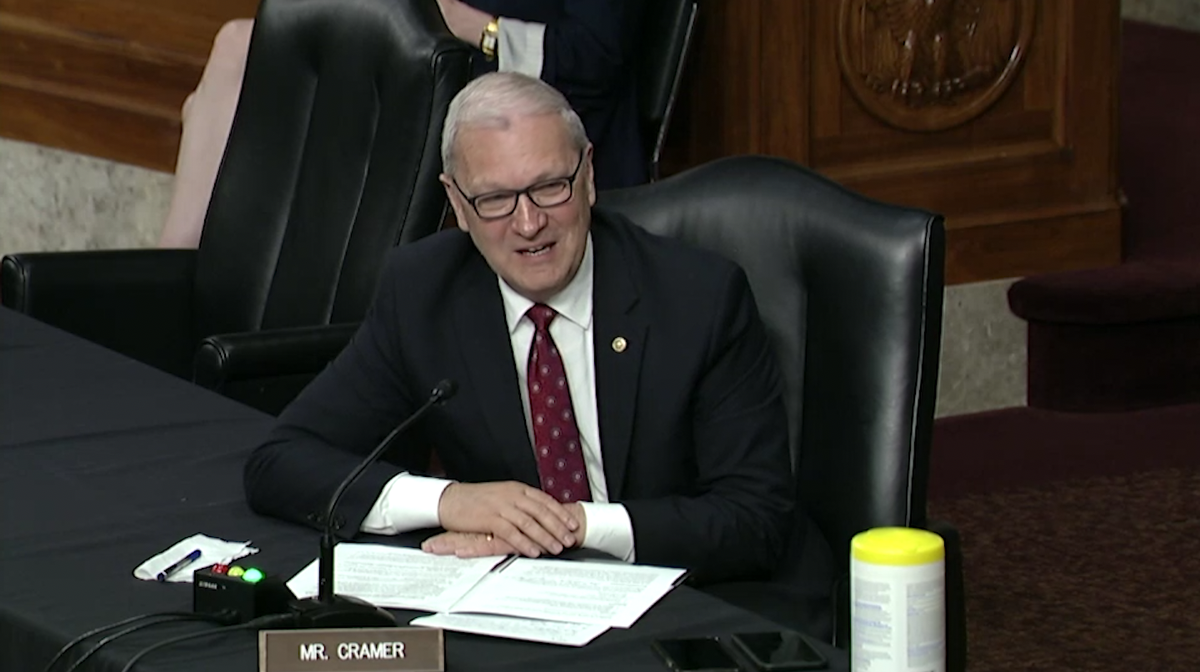Source: United States Senator Kevin Cramer (R-ND)
WASHINGTON – U.S. Senator Kevin Cramer (R-ND) discussed the future and importance of Grand Forks Air Force Base and Cavalier Space Force Station at a Senate Armed Services Committee hearing on the posture of the U.S. Air Force and U.S. Space Force. Senator Cramer began by expressing gratitude to the Air Force for maintaining the nation’s nuclear deterrent and “keeping it on track and on target.”
Senator Cramer highlighted the critical role Grand Forks Air Force Base plays in our nation’s Intelligence, Surveillance, and Reconnaissance (ISR) capabilities. He secured assurances there will be no reduction in force at the base.
“General Brown, you and I have had very frank discussions about ISR, the ISR retirements, and the tradeoffs. There’s been a lot of discussion already today again, about how to balance all of that. Some of us had doubts about the retirement of their RQ-4 Global Hawk because Air Force ISR capacity really wasn’t keeping up at least with what many of the COCOMs would like. We ultimately agreed and I think based on your wisdom and your counsel to trade some capacity for new capabilities. But this year’s budget is cutting even more Air Force ISR – even though the COCOMs are relaying in their hearings that they need more. I’m also hearing that you’re looking at cutting some of the manpower including about up to maybe 30% of Grand Forks. Again, haven’t confirmed that but we’re hearing that and I just want to get a sense of your vision and end goal in this transition,” said Senator Cramer.
“There is no intent to cut any manpower in Grand Forks. So hopefully I’ll put you a bit at ease. One of the areas I would highlight though is as we look at the ISR we have today versus the ISR we need for the future. The ISR in the future needs to be connected, persistent, and survivable,” said U.S. Air Force Chief of Staff General Charles Brown.
Senator Cramer also urged the Space Force to prioritize Perimeter Acquisition Radar Attack Characterization System (PARCS) Radar Warning System modernization at Cavalier.
“The PARCS radar is 50 years old. I’m concerned because this year’s budget documents say the radar there has a ‘high risk that equipment failures will cause unacceptable mission downtime.’ I believe last year’s budget said something similar. My staff took a briefing recently from the program office that said they are planning for a digital upgrade that would ‘drastically increase detection time, accuracy, and contributions to both missile warning and space domain awareness missions.’ But I don’t see funding for that in this budget. General Raymond, you’re obviously aware of the precarious situation in Cavalier and I know you’re going to visit there again. What do you think? Do we need to upgrade?” asked Senator Cramer.
“Sir, we continue to do that. First of all missile warning, missile tracking, [and] space domain awareness are critical missions. The PARCS radar at Cavalier is a very important part. We have upgraded that throughout the years. We spend about $22 million a year operating and sustaining that capability. The priority for this year’s budget was the space missile warning segment because we have to get after being able to detect and track hypersonics. As you mentioned, the program office right now is looking at an analog to digital modernization effort and we’ll address that in the coming budget years,” responded U.S. Space Force Chief of Space Operations General John Raymond.
He also highlighted Air Force Secretary Frank Kendall, General Brown, and General Raymond have made recent trips to visit North Dakota.
“All three of you have visited North Dakota in your capacity in the wintertime. That’s special. Particularly special, Mr. Secretary, was your visit to Minot right before Christmas. Thank you for that. But I have to say General Raymond visited Cavalier on a day when it was 41 degrees below zero,” said Senator Cramer.
